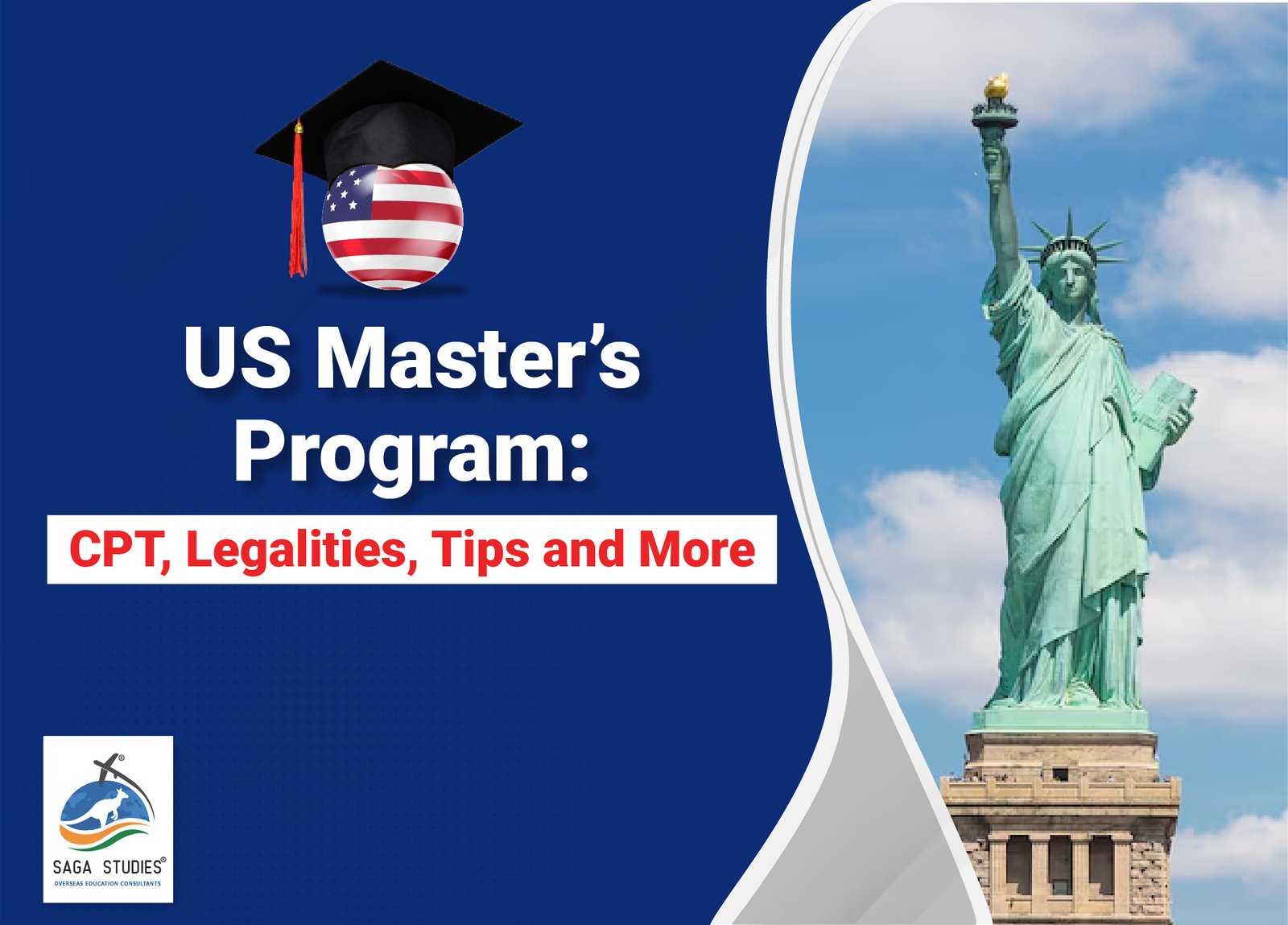The Ultimate Guide to Securing an Internship During Your US Master’s Program: CPT, Legalities, Tips, and More
Securing an internship during your master’s program in the United States is a significant step toward building your career. Internships provide valuable industry experience, professional connections, and a competitive edge when applying for full-time roles. For international students, understanding the legal framework, such as Curricular Practical Training (CPT), and knowing how to effectively search for and secure internships is crucial. This guide covers everything you need to know to successfully navigate the internship process during your US master’s program
1. Understanding Curricular Practical Training (CPT)
What is CPT?
Curricular Practical Training (CPT) is a work authorization program for international students on F-1 visas. It allows students to work in the US in a position directly related to their academic field, provided that the work is part of the curriculum. This could be a paid or unpaid internship, cooperative education (co-op), or practicum.
Eligibility Criteria for CPT:
- You must have completed at least one academic year (two semesters) of study in US before you can apply for CPT.
- The internship must be directly related to your field of study.
- You must be enrolled in a course that requires the internship, making it part of your curriculum.
How to Apply for CPT:
- Secure an Internship Offer: Get a formal offer letter from the employer, which includes details such as job title, responsibilities, start and end dates, and working hours.
- Consult Your Designated School Official (DSO): Meet with your DSO to confirm eligibility and get the necessary forms to apply for CPT.
- Register for a Course: Many universities require students to enroll in a specific course that corresponds to the internship.
- Submit Required Documentation: Provide your DSO with your internship offer letter, CPT application, and proof of course registration.
- Receive Your Updated I-20 Form: Your DSO will issue a new I-20 form, authorizing you to work under CPT.
Work Hour Limitations:
- During the semester: You can work part-time (up to 20 hours per week).
- During breaks or summer: Full-time CPT (more than 20 hours per week) is allowed
2. Legal Aspects of Working in the US on F-1 Visa
CPT vs. OPT:
- CPT (Curricular Practical Training): Can only be used while you are still enrolled in your program.
- OPT (Optional Practical Training): Allows you to work after graduation and is not tied to a specific course. OPT can be used for up to 12 months after graduation (or longer for STEM students).
Important Considerations:
- Employer Restrictions: You can only work for the employer listed on your CPT authorization.
- Duration of CPT: Using full-time CPT for more than 12 months makes you ineligible for OPT.
- Compliance: Always follow the work hours and job conditions listed on your CPT authorization to maintain your F-1 status.
3. Preparing for Your Internship Search
Creating a Strong Resume:
- Highlight Relevant Skills: Tailor your resume to highlight your academic achievements, technical skills, and any projects or research relevant to the internship.
- Keep It Concise: Focus on your most recent experiences and skills that match the job description.
- Use Action Words: Employ strong action verbs like “developed,” “designed,” and “led” to describe your accomplishments.
Crafting a Tailored Cover Letter:
- Customize for Each Application: Tailor your cover letter to the specific company and role.
- Showcase Your Fit: Explain how your academic background and skills make you a good fit for the role and how the internship aligns with your career goals.
Optimizing Your LinkedIn Profile:
- Professional Photo and Summary: Ensure your LinkedIn profile has a professional photo and an engaging summary that highlights your skills and aspirations.
- Skills and Endorsements: List your relevant skills and seek endorsements from professors or colleagues.
- Network Actively: Connect with alumni, professionals, and recruiters in your field.
4. Finding Internship Opportunities
University Resources:
- Career Center: Most universities offer career services, which include job boards, resume reviews, and interview preparation.
- Job Fairs and Networking Events: Attend career fairs, networking events, and employer info sessions organized by your university to meet potential employers.
- On-Campus Recruiting: Many companies recruit directly from universities, so check for on-campus recruitment events or virtual job fairs.
Online Platforms:
- LinkedIn: A powerful tool for networking and discovering internship opportunities.
- Job Portals: Websites like Indeed, Glassdoor, and Handshake (for university students) list internship opportunities.
- Company Websites: Regularly check the careers section of companies you are interested in.
Networking:
- Alumni Networks: Reach out to alumni from your university for advice, mentorship, and internship leads.
- Industry Events: Attend industry-specific conferences, webinars, and meetups to connect with professionals in your field.
5. Applying for Internships
Application Process:
- Apply Early: Start applying for internships several months before the start date. Companies often begin hiring interns in the fall for summer positions.
- Tailor Each Application: Customize your resume and cover letter for each job application, focusing on how your skills align with the job requirements.
- Follow Instructions: Carefully read the job posting and follow the application instructions. Some employers may require additional documents, such as a portfolio or recommendation letter.
Tracking Your Applications:
- Create a Spreadsheet: Track your applications, deadlines, and follow-up dates using a spreadsheet.
- Stay Organized: Keep a record of the roles you’ve applied for, interview dates, and responses.
6. Acing the Interview
Preparation:
- Research the Company: Understand the company’s mission, values, and recent projects. This will help you tailor your answers and ask insightful questions.
- Practice Behavioral Questions: Prepare for common interview questions like “Tell me about yourself,” “What are your strengths and weaknesses?” and “Why do you want to work here?”
- Technical Interviews: If applying for a technical role, practice coding problems on platforms like LeetCode, HackerRank, or Codewars.
During the Interview:
- Confidence is Key: Be confident and articulate about your skills and experiences.
- Ask Questions: Show your interest by asking thoughtful questions about the company culture, team structure, and internship responsibilities.
- Follow the STAR Method: For behavioral questions, use the STAR method (Situation, Task, Action, Result) to structure your responses.
7. Making the Most of Your Internship
Onboarding:
- Familiarize Yourself with the Company: Take the time to learn about the company’s structure, tools, and processes.
- Build Relationships: Make an effort to get to know your colleagues, supervisors, and other interns. Networking within the company can lead to future opportunities.
Setting Goals:
- Define Clear Objectives: Work with your supervisor to set clear learning goals and expectations for your internship.
- Seek Regular Feedback: Ask for constructive feedback throughout your internship to improve your performance.
Documenting Your Work:
- Track Your Contributions: Keep a record of your projects, achievements, and any specific tasks you completed. This will be helpful for updating your resume and LinkedIn profile.
8. Transitioning to Full-Time Opportunities
Leverage Your Internship Experience:
- Express Interest in Full-Time Roles: If you’re interested in staying with the company after your internship, let your supervisor know.
- Build a Strong Network: Maintain relationships with your colleagues and managers, as they may help you land future job opportunities.
Applying for OPT:
- Plan Ahead: If you want to continue working in the US after graduation, apply for Optional Practical Training (OPT) well in advance of your graduation date.
9. Additional Tips for Success
- Time Management: Balancing schoolwork and an internship search can be challenging, so manage your time effectively.
- Develop Soft Skills: Communication, teamwork, and problem-solving skills are just as important as technical expertise.
- Stay Updated: Keep learning about the latest trends and technologies in your field through online courses, webinars, and industry publications.
- Ask for Help: Don’t hesitate to seek guidance from professors, career counselors, or mentors.
By following these steps, you can maximize your chances of securing a meaningful internship during your master’s program in the US. Internships provide invaluable experience that can shape your career trajectory, so make the most of every opportunity.




